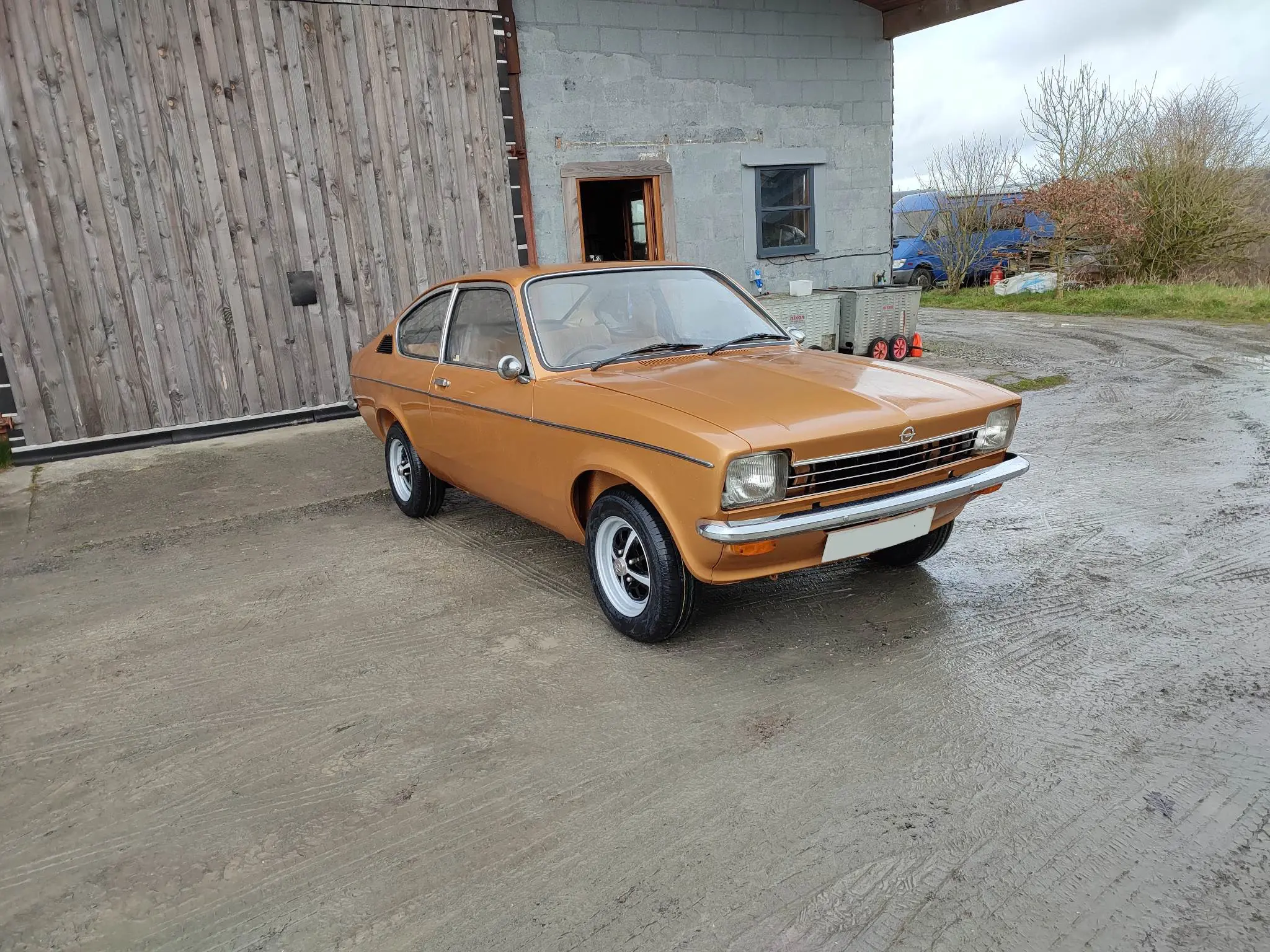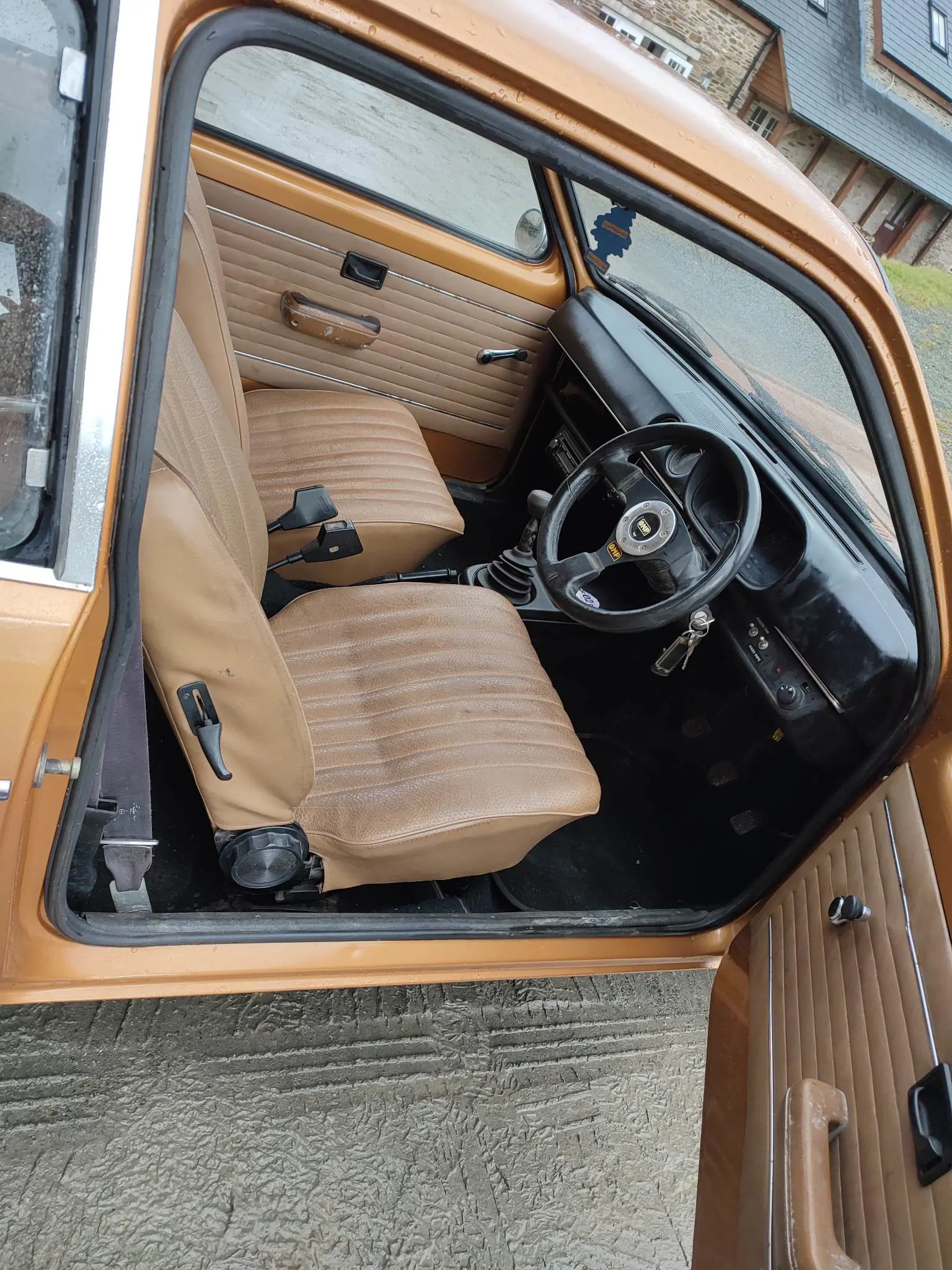MEET THE OWNER – SEAMUS NEILSON AND HIS 1976 OPEL KADETT C COUPE
07 February 2023
“I bought it from a guy in the Bristol area in February 2016 and have been slowly restoring it since then. We had a saloon when I was a kid and had always wanted one since then”. Seamus’s 1976 Kadett 1200 Coupe is not only one of the few surviving examples, it is also a reminder of a time when the Opel badge was a familiar sight on British roads.
The post-war use of the Kadett name dates back to 1962 with the original ‘A’ version. The C, which debuted in August 1973, was Germany’s version of General Motors’ T-Car programme. Other members of the family included the Holden and Isuzu Gemini, the Daewoo Maepsy, the Pontiac Acadian, the Pontiac T1000 and, of course, the Vauxhall Chevette, which made its bow in May 1975. Opel’s basic design served as the template for the entire family.

The initial bodywork choices were two or four-door saloons or a three-door estate, with the City hatchback joining the line-up in 1975. As for UK sales, Opels had been officially available in this country since 1967, with the Kadett as their most popular import. By 1973 the firm had 180 sales and service outlets in the UK, with one advertisement promising a choice of some of the most “ well thought out and well built cars on the road today”.
On the 29th August of that year, The Daily Telegraph wondered about the possibility of a British-built C with ‘Vauxhallised’ front and rear styling. This proved to be the case with the Chevette, which reflected GM’s plans that future Griffin-badged models would be based on the German marque. The two dealership chains would merge in 1981.

Meanwhile, the Kadett C always seemed slightly up-market of its British stablemate. Seamus reflects, “This must be why so few remain compared to the Chevettes, although there are quite a few Mantas still around”. Vauxhall did not offer an equivalent to the C Coupe, although Luton could point out that the City derived from their locally-designed Chevette hatchback.
At the top of the C range, the LHD-only fuel-injected 1.9-litre GT/E Rallye competed against the Ford Escort RS1800 Mk. II. As for 1200 Coupe, it was the perfect transport for those who craved more excitement than the City hatchback but found the £2,295.54 price more suitable for their budget. You could imagine one on the driveway of a 1976-vintage Thames Television sitcom or outside of that chic trattoria on the high street.

German production of the C ended in July 1979 after 1,701,076 units. The new Kadett D, aka the Vauxhall Astra, marked GM’s embracing FWD for its small cars. Opel ceased official UK sales in 1988, with the demise of the Manta B. By the 1990s, the last of the RWD Kadetts seemed as forgotten as records by Typically Tropical.
However, enthusiasts such as Seamus had fond memories, and he was delighted to come across his 1200. He recalls, “When I bought her, I immediately began repairs. The Opel very nearly became a rally car, but happily, I stayed with an original look”. Finally, after nearly seven years of devoted work, the Neilson Kadett looks in showroom condition.
As for road manners, its proud owner reports:
The Opel dates from a completely different era of vehicle - so light and responsive. She goes great for a 1200, and I love the sound of the carburetted engine! The four-speed gearbox is solid and suits the engine well. But honestly, I haven’t been more than a few miles!
So here is to many more miles of C Coupe motoring in all its Sahara Gold glory.
With Thanks To: Seamus Neilson
